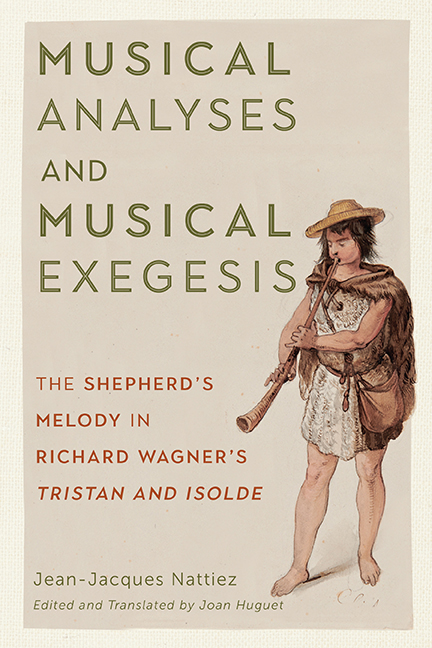 Musical Analyses and Musical Exegesis
Musical Analyses and Musical Exegesis Published online by Cambridge University Press: 02 June 2021
We will now begin studying the listener's perceptual pathways in the more traditional sense. This chapter will examine the listener's esthesic perception of the solo's immanent structures, while the following chapter will consider the solo's semantic references from an esthesic perspective.
From time to time, many of the analysts that we engaged with in part I have branched out from structural analysis, incorporating poietic or esthesic points into their work. That being said, their analyses remain at the neutral level of the tripartite division. I will emphasize once again that this does not mean that they lay claim to an illusory musicological neutrality, but either that they do not have an a priori goal of poietic or esthesic pertinence, or that they do not systematically demonstrate such significance. This obviously applies to both paradigmatic analysis and to Allen Forte's approach to analysis, both of which arise from formalist and structuralist philosophies. Heinrich Schenker's methodology is structuralist to the core. The results of Leonard Meyer's analyses can only be considered poietically or esthesically significant if this significance is verified through a separate process. The rules proposed in Lerdahl's and Jackendoff's A Generative Theory of Tonal Music (henceforth GTTM) claim esthesic pertinence; however, they are fundamentally based upon several guiding principles of Gestalt theory, and proving their perceptual pertinence would require an experimental approach.
My reader might object, stating that any time musicologists posit a paradigmatic relationship, it is based upon their own perception. Of course this is true. However, this perception is similar to a scientific observation, somewhat artificial and frozen in time, occurring in the silence of the office or library. In this way, it contrasts with the active, spontaneous, and real-time perception of someone who listens to a recording or attends a concert or opera performance. Esthesic approaches attempt to account for the perceptual pathways of the latter. This is why I prefer Jean Molino's neologism “esthesic” over the word “perception,” which can also refer to the composer's own inner ear, as well as his or her hypotheses about how a work might be perceived by listeners. Due to the very nature of his or her relationship with a work, the analyst must choose to emphasize certain aspects of it above others. As I have stated numerous times, analyses are constructions. We might think of them, as Molino very fruitfully proposes, as substitutes for symbolic poietic and esthesic pathways.
To save this book to your Kindle, first ensure no-reply@cambridge.org is added to your Approved Personal Document E-mail List under your Personal Document Settings on the Manage Your Content and Devices page of your Amazon account. Then enter the ‘name’ part of your Kindle email address below. Find out more about saving to your Kindle.
Note you can select to save to either the @free.kindle.com or @kindle.com variations. ‘@free.kindle.com’ emails are free but can only be saved to your device when it is connected to wi-fi. ‘@kindle.com’ emails can be delivered even when you are not connected to wi-fi, but note that service fees apply.
Find out more about the Kindle Personal Document Service.
To save content items to your account, please confirm that you agree to abide by our usage policies. If this is the first time you use this feature, you will be asked to authorise Cambridge Core to connect with your account. Find out more about saving content to Dropbox.
To save content items to your account, please confirm that you agree to abide by our usage policies. If this is the first time you use this feature, you will be asked to authorise Cambridge Core to connect with your account. Find out more about saving content to Google Drive.